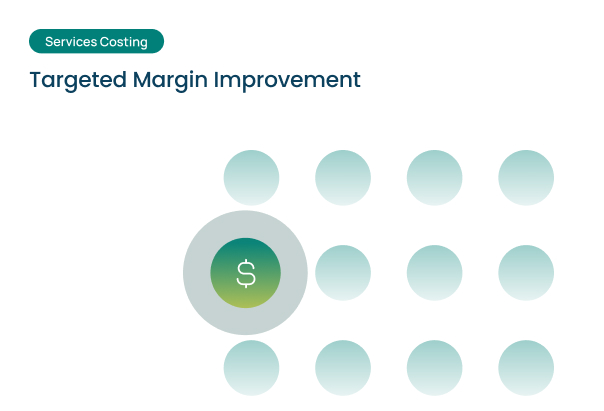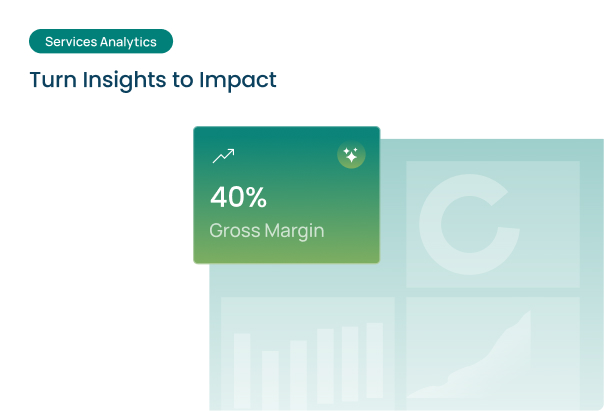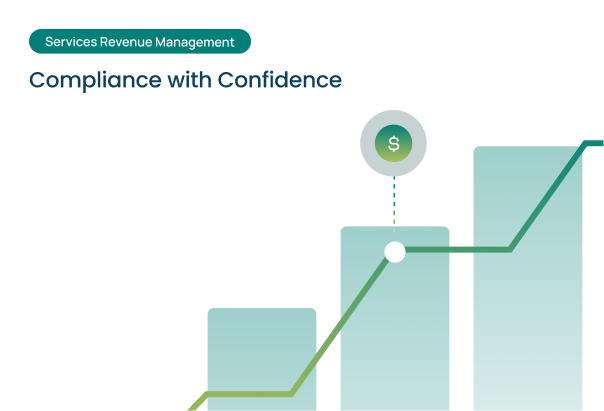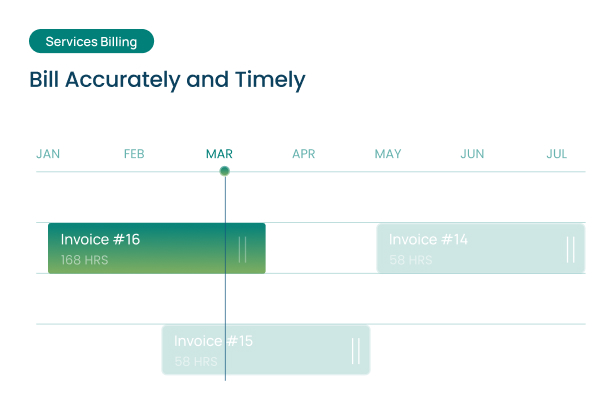Google Executive Chairman Eric Schmidt famously said “Revenue solves all known problems in business.” This adage has resonated strongly across Silicon Valley over the past two decades, where a growth-at-all-costs mentality has permeated. Profitability has taken a backseat as companies prioritize rapid scaling and market domination above everything else. However, in the post-ZIRP era, capital has become expensive. Mass layoffs have become the new normal. Even VCs and PE firms with deep pockets are asking their portfolio companies to lower their costs. Once free-spending, your clients have now turned frugal. The new mantra is ‘Profitable Growth’. Margins is the most critical factor that impacts a company’s valuation, working capital, and overall financial health. For service companies, where human capital is the primary asset, optimizing margins is crucial for long-term sustainability and growth. Higher margins generate greater cash flow, enabling companies to invest in scaling operations, adopting the latest technology, and pursuing tactical capital-intensive initiatives.
Let’s explore how various strategic interventions and operational adjustments that service companies can employ to enhance their margins, both obvious and not-so-obvious.
Decoding Profitability Through Gross Margin
Technology services companies operate with various margin metrics that gauge profitability at different levels: project margin, gross margin, EBITDA margin, contribution margin and net margin. Gross Margin stands out as a crucial indicator of overall profitability before factoring in operating expenses or SG&A (selling, general, and administrative) costs. It reflects the company’s ability to generate profits from its core business, excluding the impact of overhead and other operating costs.
COGS (cost of goods sold) = Direct + Indirect Project Costs
Gross Margins = Total Revenue – COGS
Insider Strategies To Unlock Margin Potential
Every service founder faces pressure to reduce billing rates and increase wages, which squeeze margins further. At a strategic level, there are three main avenues for margin enhancement: boosting revenue, cutting costs, and pursuing disruptive innovations. Let’s discuss in detail about various actionable interventions that are critical for margin uptick.
A. Increasing Revenue
When targeting profitability, the first thought in the mind of any founder is to cut costs. They often forget the second half of the profitability equation: revenue. For the technology services industry, revenue enhancement is a key driver of profitability.
- Optimize Pricing Strategy: One of the most important margin levers is to set the right price for your services. Pricing is a delicate balance and driven by competition and market dynamics. If your prices are high, you’ll struggle to find customers, but if your prices are too low, you’ll be leaving money on the table. To find the sweet spot, you must know what your competitors are charging, and how your customers perceive the value of your services, and how much they are willing to pay. Your pricing strategy should also match your brand aspirations. You can always charge a premium if offering something unique or particularly high-value and quality.
- Shift to Value Based Pricing: Transition from traditional timesheet-based or cost-plus based pricing to value-based pricing models where you think you can win on margins. T&M billing rates are very subjective and driven by competition and client demands. Fixed-fee and outcome-based engagements, where rates are determined by the quantifiable benefits provided to the client, mostly yield higher margins if the estimation and scope is managed well and efficiently delivered. It improves your quality of revenue and provides you more control over your margin profile.
- Maximize Billable Hours: If you are delivering client projects through global teams, and billing standard 40 hours per week, you are leaving both incremental revenue and margin on table. In several countries with quality human capital, the standard legally permissible working hours are as high as 48 hours/week. By shifting suitable workloads to these locations, companies can benefit from lower resource costs while simultaneously increasing billable hours, potentially allowing them to charge clients more for the additional productive capacity.
- Bundle Services Offerings: Bundling is a very common method for product companies where multiple products are grouped together, and sold as a single cohesive package typically at a fixed price. The same can be applied to services. Companies can bundle various them into comprehensive packages, making it simpler for clients to comprehend and evaluate the combined offerings. E.g., if a client is buying application development services, you can bundle quality assurance (QA) services along with it, but can be sold for higher margin as a part of a bundle.
- Add COLA (Cost of Living Adjustment): Given the recent surge in inflation across most industries and countries, add a COLA component in customers Master Services Agreement (MSA) or multi-years engagement contracts. It will allow you to contain or mitigate the impacts of hyper-inflation as it can automatically increase the charges on an annual basis without any change in scope of work. You should also examine your existing contracts if those are eligible for escalation under the COLA provision. COLA terms and increases can be negotiated for a reasonable cap.
- Focus on High-Margin Customers: Leaders should regularly review customer and project level margins, focussing on the most profitable ones. Drop the ones with lower gross margins if you can’t find ways to increase the profitability of those customers or projects.
B. Reducing Cost
Cost management is a critical aspect of maintaining profitability and ensuring long-term business sustainability.
- Improve Onsite-Offshore Ratio: Most technology service firms operate globally and execute projects by outsourcing portions of work to lower-cost regions. Under the global delivery model (GDM) or onsite-offshore model, these companies have entities set up in various low-cost regions or countries (known as offshore) with high quality talent. Traditionally, the gross margin at offshore locations are much higher, close to 1.5-2 times. Leveraging global talent pools and outsourcing specific tasks or projects to those regions is a powerful profit driver.
- Minimize Subcontracting: While hiring subcontractors can provide flexibility for unexpected or rapidly-emerging project needs, just-in-time (JIT) hiring often comes at the cost of reduced margins. Service companies should strive to develop robust resource capacity management capabilities and business acumen to anticipate demand accurately.
- Optimize Available Capacity (Bench): The ‘bench’ refers to unutilized resources that are not actively billable. There is always some available capacity needed in mid-size or large firms to fulfill new project demands or attrition in ongoing projects. As a thumb rule, a 15-20% bench is considered healthy. However, it is a direct cost to the company and hence should be closely monitored. Improve resource planning to maximize billable hours and minimize bench level. This can involve strategies such as actively pursuing new project opportunities, implementing effective resource forecasting and capacity planning processes, or cross-training resources to enable their deployment across multiple service lines.
- Balance Project Role Ratios: Establishing a well-balanced team pyramid with the right mix of role ratios of senior, mid-level and junior resources on projects can contribute to significant cost savings. This approach leverages the expertise of experienced professionals to mentor and guide junior employees, creating a self-sustaining knowledge transfer model. By allocating a higher proportion of cost effective junior resources, companies can reduce overall resource costs without compromising quality.
- Increase Fungibility of Resources: One of the big challenges for service firms is to quickly fulfill project demands with right skilled talent. In many countries, hiring has 3-4 months of cycle due to lengthy evaluation processes or long notice periods. So, companies either have to keep a huge bench or fulfill the demand with available subcontractors. Both approaches result in compromising margins. By hiring fungible talent or cross-train existing employees to handle multiple types of projects, businesses can increase flexibility and margins, while reducing the need for specialized hires.
- Reduce Project Scope Creep: As companies move to value-based pricing models such as fixed fee or outcome-based engagements, project scope management and efficient delivery become critical. Project leads need to clearly define and manage project scope to avoid any scope creep, which can erode margins. They also need to develop methodologies and accelerators to avoid duplication of effort.
C. Fostering Innovation
Most companies are familiar with the most obvious ways to increase margins – increasing prices and reducing cost. However, they have their limitations in terms of how much margin can be squeezed from them. Having explained those strategies, let’s talk about the true differentiator of improving margins: digital disruptions through innovation.
- Productize services: By standardizing and productizing repeatable services high in demand and not excessively customized for each project, companies can improve efficiency, reduce costs, and potentially increase margins. Productized services benefit from economies of scale, streamlined delivery processes, and the ability to leverage reusable components or templates, all of which contribute to margin improvement.
- Invest on Specialized Services: Develop niche expertise and offer specialized skills that can command premium rates . Focusing on high-value services and upselling opportunities can lead to increased revenue and higher profit margins. Develop case studies and success stories showcasing the impact of your specialized services to attract new customers and upsell existing ones. Invest in an innovation culture in your company through incentives and specialized training.
- Increase Productivity through AI: Open LLM models have 10x’d the productivity across all business functions for those who know how to wield them. Automation can streamline processes, reduce manual efforts, and improve overall efficiency, thereby increasing productivity and margins. Leverage new-age AI/ML based platforms to improve processes automation and visibility.
Impact Through A Data-Driven Approach
“You can’t improve what you don’t measure.” – Peter Drucker
To achieve meaningful margin improvements, companies should consider adopting a more comprehensive data-driven approach. By analyzing historical project data, key metrics, and market trends, firms can develop effective models and playbooks that can result in higher value delivered to clients, while maintaining healthy margins.
A few examples of key performance indicators (KPIs) related to revenue and cost are Revenue Per Person (RPP), Average Bill Rates (ABR), Quality of Revenue (QoR), Average Deal Size, Gross Margins, Cost Per Person (CPP), utilization rates and subcontractor spend should be monitored. All of these should be sliced & diced by customers, locations, roles, levels, and competencies.
In Conclusion…
Once companies have studied the right metrics, they can then employ the right interventions for margin improvements. Implementing these margin levers requires careful planning, execution, and continuous monitoring. Service companies must strike a balance between cost optimization and revenue growth, while maintaining the quality of service delivery, client satisfaction, and employee engagement.
Looking to gain a competitive edge by optimizing your service business metrics? Let’s connect on LinkedIn. I’m always happy to share insights and best practices.



